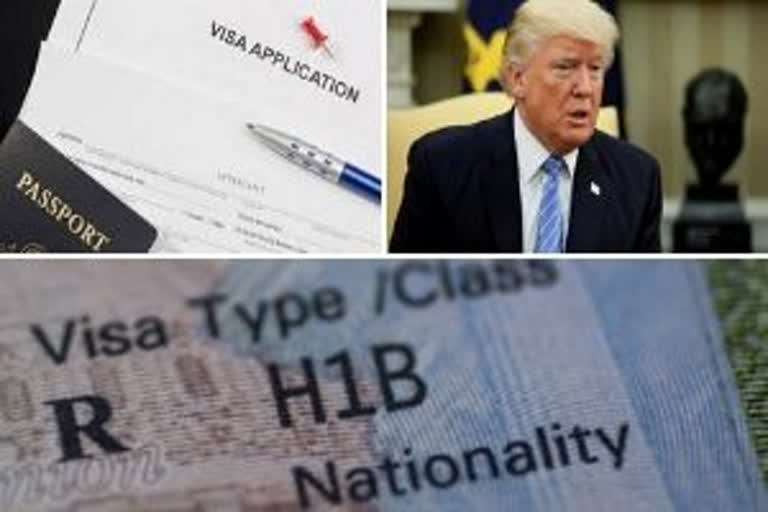New Delhi: The United States has five well-defined categories for issuing immigrant visas for obtaining citizenship, such as naturalization, permanent residency (Green Card), family, refugees, and adoption. It regulates the entry of short-term non-immigrants to work in the economic, educational and cultural sectors in the United States through the grant of H1B, H2B, J and L visas. It is this non-immigrant category that the Trump Administration has banned from entry into the United States from 24 June 2020 till 31 December 2020, with a few specific exceptions.
The H1B visa is given under the 1990 U.S. Immigration Act to employers in the United States to temporarily hire foreign workers with university degrees in specialized occupations. Normally valid for a period of 3 to 6 years, the holder does not have to leave the United States after the position he/she was employed for ends. The H2B visa is given for non-farm workers from 81 designated countries (excluding India) without any specific educational or particular requirement to enter the United States for 6 months to a year for temporary work sponsored by a U.S. employer. J visas are issued to educational and cultural persons to foster global understanding and requires their holders to return to their country of origin on completion of their program. L visas are given for executives who work for companies located outside the United States who are sent for temporary or specialized work in the United States by their companies.
Also read:Assessing impact of US decision on blocking H1B visas: MEA
President Trump’s decision comes on the heels of the 22 April 2020 measure taken by his Trump Administration “suspending entry of immigrants who present a risk to the U.S. labour market” following the Covid-19 outbreak for 60 days. The April notification had not included the H1B/H2B/L categories.
The ban on entry of non-immigrants into the United States will be in force until after the U.S. Presidential elections are held in November 2020. This measure is yet another example of the anti-foreigner policy followed by President Trump to garner votes from essentially white Americans in the forthcoming elections.
The Trump Administration’s anti-immigration policy has been implemented steadily over the past three years. The United States has imposed a travel ban from African and Muslim majority countries and made it almost impossible for people to seek asylum in the United States. President Trump has taken a personal interest in constructing a wall along the United States-Mexico border to keep out illegal immigrants trying to enter the country from the south. The U.S. Citizenship and Information Services (USCIS), which is the bureaucratic structure responsible for regulating immigration into the United States has been closed since March this year, pushing back even the processing of existing applications for immigration into the country.
The immediate provocation for the new measure is the negative impact of the Covid-19 pandemic on employment in the United States. Between February and April 2020, the United States recorded more than 20 million American citizens losing their jobs in key industries where employers had sought H1B and L visa holders to fill vacancies. More than 17 million American citizens lost jobs in industries which were now sought to be filled by H2B non-immigrant visa holders from abroad.
